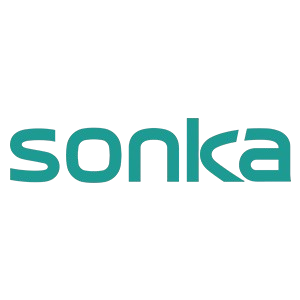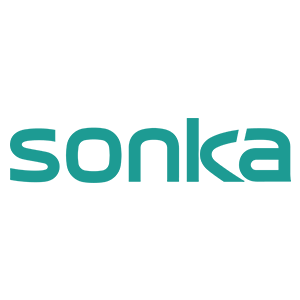Telemedicine kiosks play a pivotal role in reducing healthcare disparities by providing immediate access to medical services, particularly in underserved areas. These kiosks serve as a lifeline in rural and urban communities, offering crucial medical consultations without the need for lengthy travel, which can be especially challenging in rural areas. According to recent statistics, there has been a notable increase in the use of telehealth services in rural regions, leading to significant advancements in patient outreach. For instance, the American Medical Association highlights the effectiveness of telemedicine kiosks in overcoming digital divides, particularly in regions lacking reliable internet access. Case studies, such as those in Peoria and Chicago, demonstrate how integrating kiosks has enhanced public health outcomes by linking residents with vital healthcare resources and community support services.
Implementing automated diagnostic tools in telemedicine kiosks is a cost-effective strategy compared to traditional in-person medical visits. These kiosks contribute to reduced operational costs by minimizing the need for extensive in-person consultations, thus saving on labor and time. Healthcare facilities that have embraced this technology report tangible savings, as kiosks optimize the allocation of healthcare resources by providing efficient initial diagnostics and monitoring vital signs remotely. Automation in these kiosks boosts efficiency, enabling healthcare providers to focus on improving patient care quality while efficiently managing resources. The enhanced efficiency from using automation allows healthcare systems to focus their attention on more complex cases, thereby improving overall patient outcomes and satisfaction.
Sonka's body scanning telemedicine kiosk is designed to offer comprehensive health diagnostics, including urine analysis and SpO2 monitoring, making it a crucial tool in assessing respiratory health. This kiosk features advanced technology that facilitates real-time analysis of vital health parameters. Regular monitoring of SpO2 levels is particularly important for chronic condition patients, such as those with COPD, as studies have shown it can improve management and outcomes. The kiosk's user-friendly interface encourages frequent use and patient engagement, ensuring consistent health check-ins and improved patient outcomes.
The intelligent self-service kiosk by Sonka Medical integrates cutting-edge technology enabling patients to self-monitor crucial vital signs such as blood pressure and ECG. This proactive approach to health management can be pivotal, especially given statistics indicating that nearly half of American adults have hypertension. Self-monitoring has been shown to promote better long-term management of blood pressure. Additionally, the kiosk's ECG capabilities offer rapid assessments of heart health, aiding in the quick detection and management of cardiac issues, thus elevating the quality of care available at the point of need.
The mobile telemedicine cart by Sonka enhances healthcare accessibility by offering portable, multi-parameter diagnostic capabilities, which are particularly useful in remote areas and community health events. It facilitates comprehensive health assessments, including glucose monitoring, crucial for chronic disease management like diabetes. The cart's convenience and efficiency have shown to improve patient engagement and adherence to treatment protocols, underscoring its role in supporting sustained healthcare delivery even in challenging environments.
Sonka's customizable health checkup station is instrumental in offering personalized health evaluations through detailed body composition analysis—a crucial factor in addressing obesity and metabolic disorders. With obesity rates continuing to rise, consistent assessments provided by this kiosk can aid in managing associated health risks effectively. These stations can be integrated into community health initiatives for widespread health education and risk screening, promoting preventative healthcare measures and general public awareness.
Leveraging AI technology, Sonka's disease detection kiosk significantly enhances the precision and speed of telemedicine diagnostics. AI integration promises to revolutionize healthcare by enabling accurate and efficient patient evaluations. Successful deployments have demonstrated notable improvements in patient outcomes. As AI evolves, its application in telemedicine kiosks will likely continue to expand, paving the way for innovative and effective healthcare solutions tailored to meet future demands.
Continuous monitoring of vital signs through telemedicine kiosks significantly enhances the management of chronic conditions such as diabetes and heart disease. By enabling around-the-clock monitoring, these kiosks provide timely interventions, which are crucial for improving patient outcomes. Research indicates that regular monitoring can reduce hospitalization rates and improve the quality of life for patients with chronic conditions. Additionally, the integration of telemedicine kiosks with Electronic Health Record (EHR) systems ensures seamless communication between patients and healthcare providers, facilitating more effective and coordinated care.
The ability to share data in real-time through cloud-enabled EHR integration has revolutionized healthcare outcomes by reducing response times and increasing the efficiency of medical interventions. Cloud technology enhances interoperability across various healthcare systems and providers, making it possible for patient data to be accessed and updated quickly and accurately. This integration reduces the margin for error, thereby improving patient care coordination. Examples of such integrated systems show not only a reduction in medical errors but also an augmentation in patient satisfaction due to enhanced healthcare delivery efficiency.
Multi-functional body composition analysis machines are transforming the healthcare landscape by providing comprehensive health assessments. These machines evaluate various health indicators such as muscle mass, fat distribution, and metabolic rate, enabling healthcare practitioners to develop personalized health strategies for patients. Research has demonstrated the effectiveness of body composition analysis in preventative healthcare, supporting its use for anticipating medical risks and tailoring proactive interventions. By offering detailed metrics, these machines are crucial in constructing treatment plans that meet individual patient needs, nurturing a personalized healthcare approach tailored to specific conditions and lifestyle choices. Additionally, body composition analysis has been shown to optimize treatment efficacy, paving the way for improved patient outcomes through more targeted care.
Portable vital signs monitors represent an exciting advancement in decentralized healthcare, responding to the increasing demand for accessible diagnostic tools. These devices enhance patient access to continuous health monitoring beyond traditional clinical settings, making healthcare more convenient and efficient for patients. For instance, portability leads to significant cost savings by reducing the need for in-clinic visits, and it enhances diagnostic accuracy by enabling real-time data collection and immediate intervention. With trends indicating further advancements in portable monitoring technology, the future of healthcare delivery promises better integration between patient-centered care models and technological innovation, ensuring that monitoring vital signs becomes more seamless and efficient. This innovation fosters not only healthcare accessibility but also boosts the overall quality of patient care.
Strategic placement of telemedicine kiosks in high-traffic clinical areas is crucial to maximize usage and accessibility for patients. By situating kiosks in busy areas like emergency departments or community health clinics, facilities can ensure that these digital health stations are easily accessible to those in need. Research supports this strategy, showing that centrally located kiosks significantly increase patient engagement. For example, statistics indicate that when kiosks are placed in central locations, patient interaction rates rise, indicating enhanced healthcare access. It is also imperative to provide clear signage and guidance to ensure a seamless user experience, helping patients navigate and use these advanced facilities effectively.
Training healthcare staff on how to assist patients with telemedicine kiosks is essential for optimal operation and user satisfaction. Adequately trained staff play a vital role in guiding patients, thereby improving interaction quality and patient satisfaction. Developing standard operating procedures (SOPs) can promote consistency in patient interactions across various healthcare settings. Studies have shown that when healthcare personnel are well-trained, patient satisfaction and utilization rates of telemedicine services tend to increase. This not only enhances the overall experience for the patients but also contributes to the successful integration of telemedicine kiosks in routine healthcare delivery, ensuring that staff are equipped to handle a range of inquiries and technical issues.


Copyright © 2025 by Shenzhen Sonka Medical Technology Co., Limited - Privacy policy